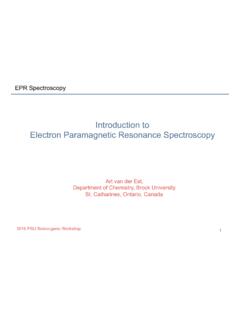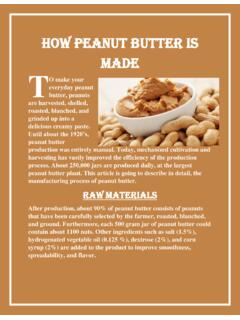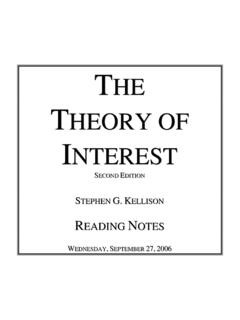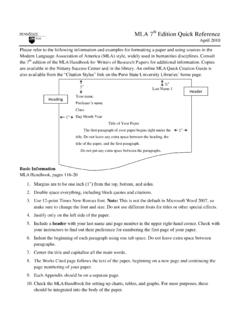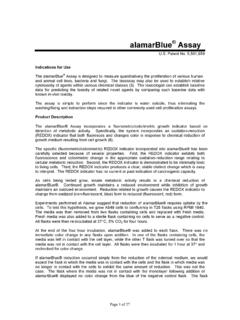Transcription of SpectraMax M3, M4, M5, and M5e Multi-Mode Microplate ...
1 Page 1 Wednesday, July 7, 2010 2:09 PM. SpectraMax M3, M4, M5, and M5e Multi-Mode Microplate Readers User Guide 0112-0115 F. July 2010. Page 2 Wednesday, July 7, 2010 2:09 PM. This document is provided to customers who have purchased Molecular Devices, Inc. ( Molecular Devices ) equipment, software, reagents, and consumables to use in the operation of such Molecular Devices equipment, software, reagents, and consumables. This document is copyright protected and any reproduction of this document, in whole or any part, is strictly prohibited, except as Molecular Devices may authorize in writing. Software that may be described in this document is furnished under a license agreement.
2 It is against the law to copy, modify, or distribute the software on any medium, except as specifically allowed in the license agreement. Furthermore, the license agreement may prohibit the software from being disassembled, reverse engineered, or decompiled for any purpose. Portions of this document may make reference to other manufacturers and/or their products, which may contain parts whose names are registered as trademarks and/or function as trademarks of their respective owners. Any such usage is intended only to designate those manufacturers' products as supplied by Molecular Devices for incorporation into its equipment and does not imply any right and/or license to use or permit others to use such manufacturers' and/or their product names as trademarks.
3 Molecular Devices makes no warranties or representations as to the fitness of this equipment for any particular purpose and assumes no responsibility or contingent liability, including indirect or consequential damages, for any use to which the purchaser may put the equipment described herein, or for any adverse circumstances arising therefrom. For research use only. Not for use in diagnostic procedures. The trademarks mentioned herein are the property of Molecular Devices, Inc. or their respective owners. These trademarks may not be used in any type of promotion or advertising without the prior written permission of Molecular Devices, Inc. Product manufactured by Molecular Devices, Inc.
4 1311 Orleans Drive, Sunnyvale, California, United States of America 94089. Molecular Devices, Inc. is ISO 9001 registered. 2010 Molecular Devices, Inc. All rights reserved. Printed in the USA. Page 3 Wednesday, July 7, 2010 2:09 PM. Contents Chapter 1 Description .. 7. Introduction .. 7. Applications.. 8. Certified SpectraMax M5e-HTRF Readers .. 8. Optics.. 8. Dynamic Range .. 8. PathCheck Pathlength Measurement Technology .. 9. Automix .. 9. Temperature Control .. 9. Supported Plates .. 9. Computer Control .. 10. Instrument Control.. 10. Data Collection and Display .. 10. Data Reduction and Plotting .. 10. Immediate Results Reporting and Analysis .. 10. Reader Components.
5 11. The Control Panel.. 12. Temp On/Off .. 13. Temp .. 13. Wavelengths ( . Ref .. 14. Read Cuvette.. 14. Mode .. 14. Drawer .. 14. The Microplate Drawer .. 15. Microplates .. 16. The Cuvette Chamber.. 17. Cuvettes .. 17. The Back Panel .. 18. 0112-0115 F 3. Page 4 Wednesday, July 7, 2010 2:09 PM. Contents Chapter 2 Principles of Operation .. 19. Absorbance .. 19. Optical Density.. 19. Transmittance .. 19. PathCheck Pathlength Measurement Technology .. 19. Water Constant or Cuvette Reference? .. 22. Background Considerations .. 22. PathCheck Pathlength Measurement Technology and Interfering Substances .. 23. Normalizing Absorbance Measurements.. 24. Fluorescence .. 24.)
6 Time-resolved Fluorescence (M4, M5, and M5e only) .. 27. Fluorescence Polarization (M5 and M5e only) .. 28. Luminescence .. 28. Functional Description .. 29. Temperature Regulation .. 29. Read Types .. 30. Endpoint Read .. 30. Kinetic Read.. 30. Spectrum Read.. 30. Well Scan Read .. 31. Automix .. 31. Computer Control .. 31. Chapter 3 Installation .. 33. Unpacking .. 34. Setting up the Instrument .. 35. Installing the Drawer Adapter .. 36. Removing the Drawer Adapter .. 37. 4 0112-0115 F. Page 5 Wednesday, July 7, 2010 2:09 PM. SpectraMax M3, M4, M5, and M5e Multi-Mode Microplate Readers Chapter 4 Operation .. 39. Cuvette Read Quick Overview .. 39. Microplate Read Quick Overview.
7 40. Preparing for a Cuvette or Microplate Reading .. 40. Turn the Instrument and Computer On .. 40. Set the Temperature (Optional) .. 41. Select the Wavelength .. 42. Read the Cuvette .. 43. Read the Microplate .. 43. Optimizing Fluorescence Assays.. 44. Optimizing Absorbance Assays .. 44. Excitation and Emission Wavelengths .. 44. Emission Cutoff Filter .. 45. Readings Per Well .. 45. PMT Voltage .. 45. Temperature Control .. 45. Using Spectral Scanning to Optimize Excitation and Emission Wavelengths for Fluorescence Assays .. 46. Optimizing Time-resolved Fluorescence Assays .. 50. Optimizing Fluorescence Polarization Assays .. 51. Optimizing Luminescence Assays.
8 52. Chapter 5 Maintenance .. 53. Technical Support .. 53. Moving a SpectraMax Multi-Mode Microplate Reader.. 55. General .. 55. Cleaning .. 56. Cleaning the Fan Filter .. 57. Changing the Fuses .. 57. Chapter 6 Troubleshooting .. 61. Opening the Drawer Manually .. 61. Error Codes and Probable Causes.. 62. Error Messages .. 62. 0112-0115 F 5. Page 6 Wednesday, July 7, 2010 2:09 PM. Contents Appendix A Specifications .. 67. SpectraMax Multi-Mode Microplate Reader Performance Specifications .. 67. System Diagrams and Dimensions .. 73. Common Fluorescence and Luminescence Wavelengths .. 74. Fluorescence .. 75. Time-resolved Fluorescence .. 75. Luminescence .. 75. Appendix B Cables and Accessories.
9 77. Cables.. 77. Serial Interface Cable .. 77. USB Adapter Cable .. 77. Accessories .. 78. Cuvettes .. 78. Standard and Semi-micro Cuvettes.. 79. Ultra-micro Cuvettes (Hellma) .. 79. Standard, Semi-micro, and Microcuvettes (Hellma) .. 80. Ultra-micro Cuvettes (Hellma) .. 81. Index.. 83. 6 0112-0115 F. Page 7 Wednesday, July 7, 2010 2:09 PM. Description 1. Introduction The SpectraMax M3, M4, M5, and M5e Microplate Readers are a series of dual-monochromator, multidetection, Multi-Mode instruments with a triple-mode cuvette port and 6-well to 384-well Microplate reading capability. Detection modalities are shown in Table 1-1. Table 1-1 SpectraMax Multi-Mode Microplate Readers and Applicable Modes SpectraMax SpectraMax SpectraMax SpectraMax Modes M3 M4 M5 M5e Absorbance X X X X.
10 Fluorescence intensity X X X X. Fluorescence X X. polarization Time-resolved X X X. fluorescence Luminescence x x X X. Note: In this user guide, all references to SpectraMax Multi-Mode Microplate Readers include the M3, M4, M5, and M5e models. When a feature or capability applies to only certain readers, this exception is noted. The optical performance is comparable to a top-of-the-line dedicated spectrophotometer or spectrofluorometer with no trade-off between instrument performance and the number of read modes. The built-in cuvette port can be used for absorbance, fluorescence and luminescence readings. Dual monochromators allow selection of any absorbance wavelength between 200 nm and 1000 nm, and any excitation wavelength between 250 nm and 850 nm for readings in fluorescence intensity, time-resolved fluorescence (M4, M5, M5e models only) or wavelength-selectable luminescence modes, and 400 750 nm for readings in fluorescence polarization mode (M5, M5e models only).
